Find out what the propagation and garden teams have been up to this week.
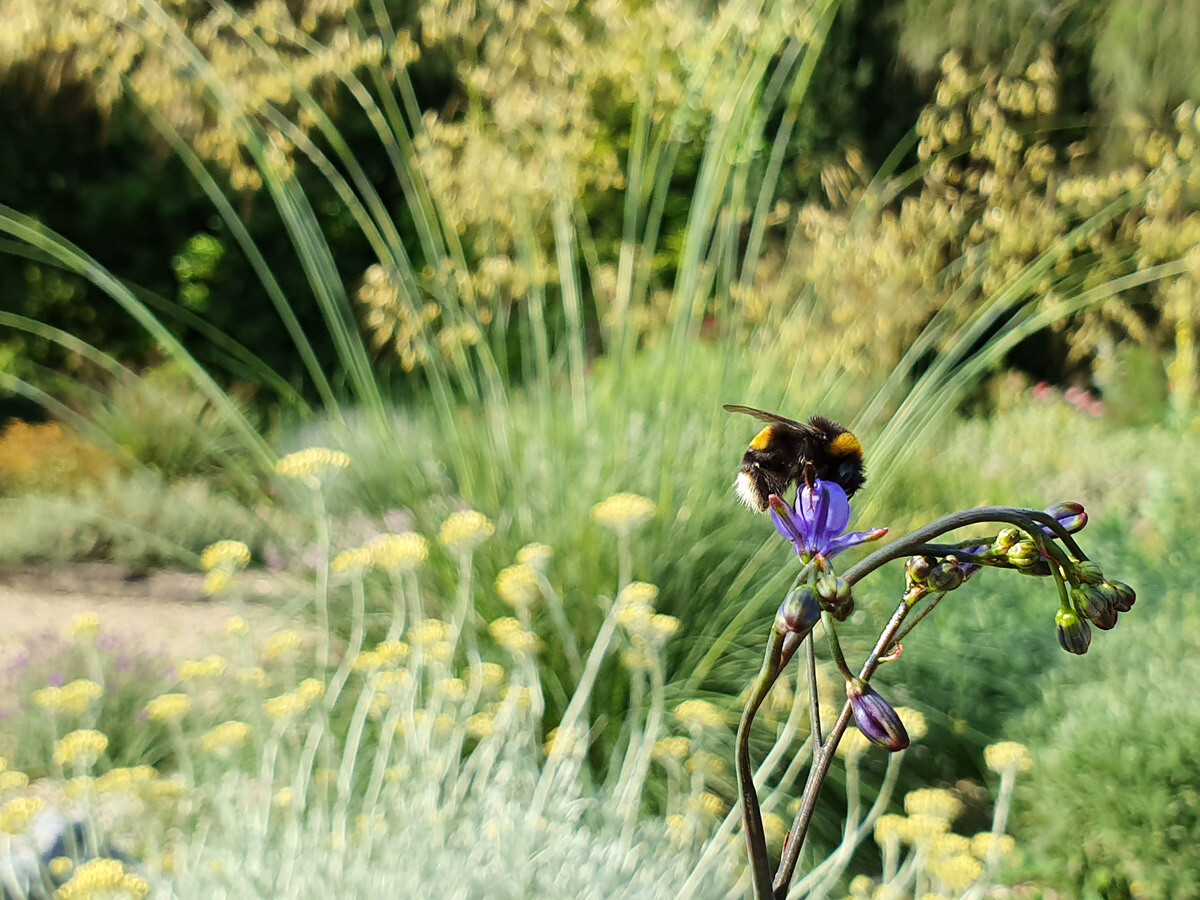
Wild Words from the Ground - June

Welcome to our series of blogs featuring the photos and sightings of wildlife in the garden (and outreach sites like Chattowood and the Meanwhile Garden) by our staff, whether in the office, shop, tea-room, nursery or garden. The images are curated and commented upon by Dr Chris Gibson, our Wildlife Advocate.
While the photos are not always of the highest quality – our staff are always busy doing their main jobs! – they give a real feel of life in the garden, something we are very keen to encourage, as indeed was Beth.
This June has been characterised by sunshine, often very hot, and a lack of rainfall. In such conditions our wildlife really needs our help, and Mel’s photo shows one of the things we have been doing, providing a drink for a fledgling Blue Tit that has emerged from the nest into the furnace.
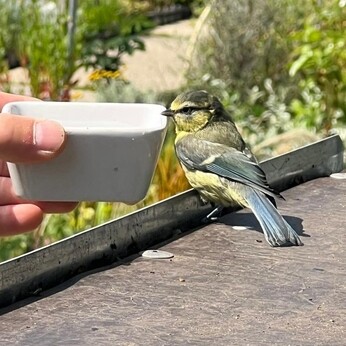
The grass is now becoming parched...but it will recover. And the beds and borders are brimming with flowers, and feeding masses of insects. Two years ago I was worried; last year I was even more worried we were entering the era of the Silent Summers. But this year the buzz is back, and here are some of the sightings from our staff.
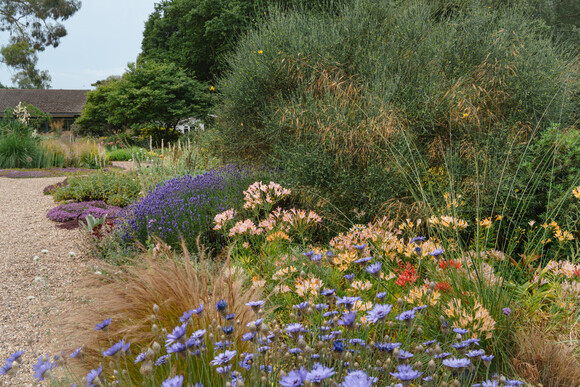
Much of the buzz comes from bumblebees and they are aplenty, nectaring on garden favourites like eryngium, as in this photo by Rob. Cathy also captured some great shots of a Common Carder-bee, so bright that I wondered if it might have been one of this species’ rarer relatives.
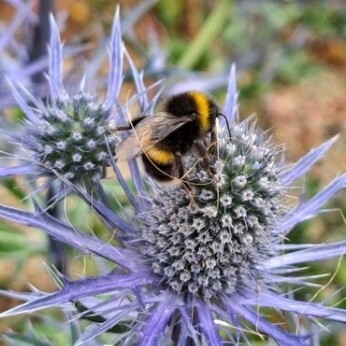

Leanne found a Hornet exploring the office. Alarming perhaps close up, they really are gentle giants, and part of the suite of predators in the garden that helps maintain ecological balance. She also filmed the activity around one of the bee hotels: this still really doesn’t do justice to the activity of especially the occupants of the smaller holes.
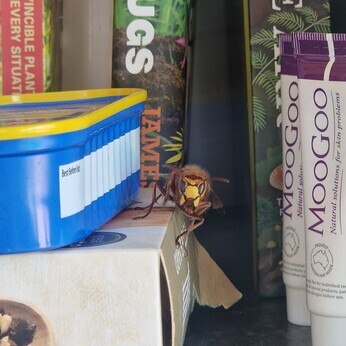
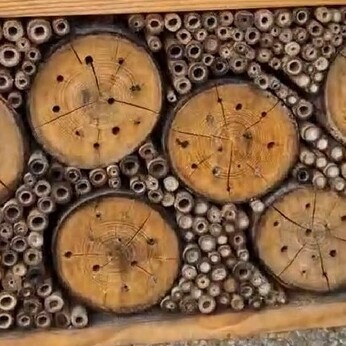
Sawflies are related to wasps, although they have very different larvae, being caterpillar-like and munching on leaves. Cathy’s photo shows Iris Sawfly larvae eating the pondside irises, one of the easier species to identify. Perhaps surprisingly, given its distinctiveness and abundance this year and last, current distribution maps show only three or four other Essex localities, almost certainly due to under-recording. Often very abundant as an adult at this time of year, Turnip Sawfly, as photographed by Scott, may in fact be one of a number of very similar species masquerading as one: there were no obvious members of the cabbage family where they were most common.
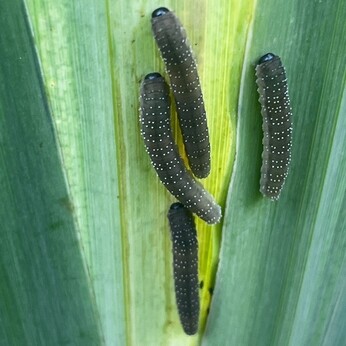
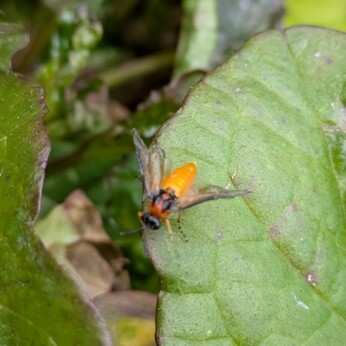
Cathy also posted a picture of the distinctive stripy caterpillars of Cinnabar Moth, which can afford not to hide away as they are protected by eating the poisons of their foodplant, Ragwort. During June we find both caterpillars (often in abundance) and adults (photos Cathy and Mel), the adults also being warningly coloured and so are able to be active by day and by night.
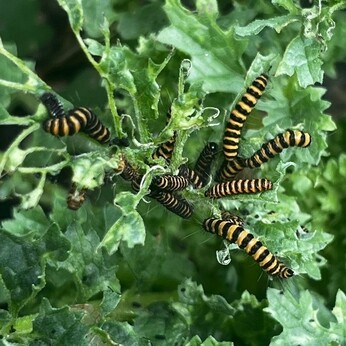
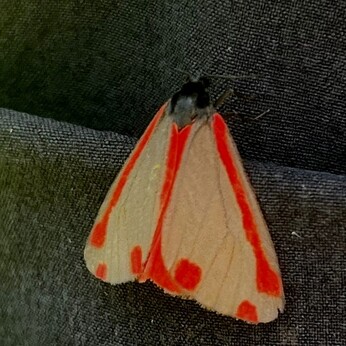
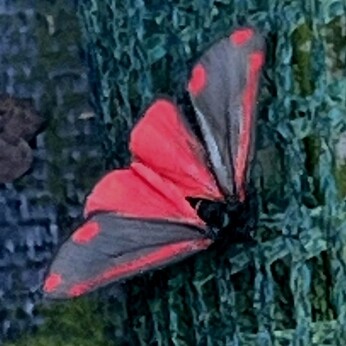
Nocturnal moths are also sometimes found by day, including the very distinctive Elephant Hawk-moth (Mel) and Buff-tip (Hollie), ‘pink and green’ and ‘essence of birch twig’ respectively!
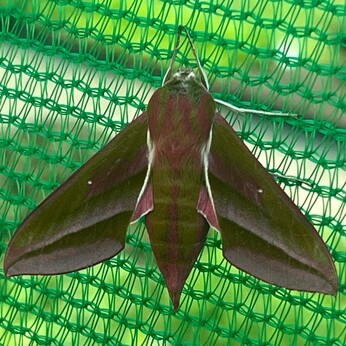
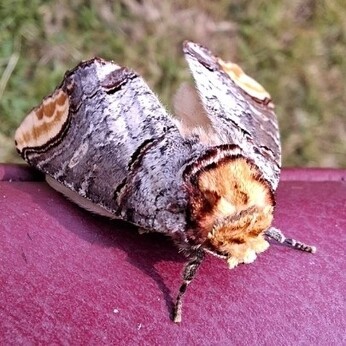
Two other habitual day-fliers were the Hummingbird Hawk-moth seen by Scott towards the end of the month (too fast for a photo!), the first of hopefully many, and Pete’s lovely little Mint Moth, whose caterpillars feed on mints and other Lamiaceae. Often, when fresh, this has a purplish reflection to its wings, and the paler patches can be quite golden. Scott also photographed a tussocky Vapourer Moth caterpillar, a creature so distinctive that it seems to find its way into many of these monthly reports!
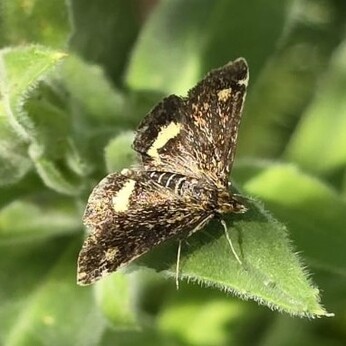
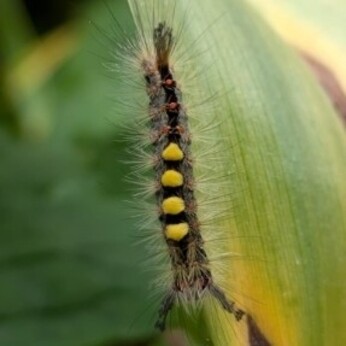
There are always flies around the garden but they rarely take centre stage. But Scott found a lovely one (to look at), a hoverfly, and a very variable one at that, mimicking several different types of bumblebee. A great pollinator as well, its only downside is it lives as a larva inside a narcissus bulb, turning it to mush: it is the Narcissus Bulb Fly. But we do have lots of daffodil bulbs, so we can spare a few!
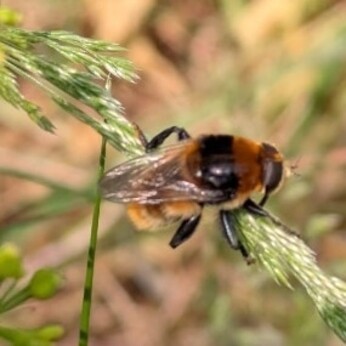
The ‘June Gap’ is usually a low point in the butterfly summer, as spring butterflies have largely faded out and many summer ones have still to emerge. Rob photographed a pristine Peacock and Painted Lady, suggesting they were freshly emerged, but both Annie’s Large White and Scott’s Comma have clearly been around a bit and each has a wing tear that probably signifies a tussle with a bird.
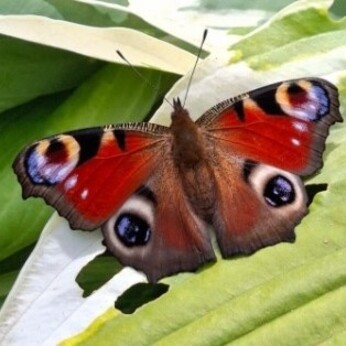
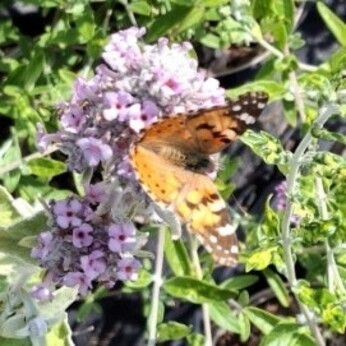
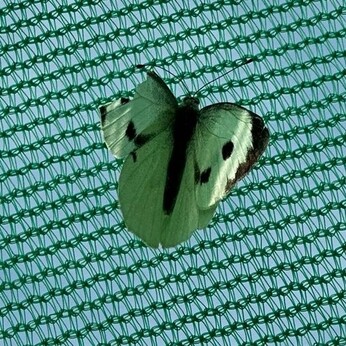
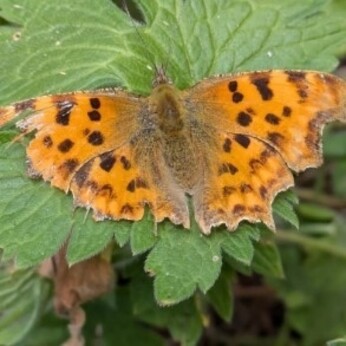
Moving lastly on to the beetles, prominent in the garden by day on many a flower have been Thick-thighed Beetles. Kirsten’s photo is of a male, showing his swollen hind legs; females are just as shiny green, but a lot more svelte! Leaf-beetles are very numerous, and sometimes very hard to identify, unless of course they are large, shiny and covered in rainbow lines like the familiar Rosemary Beetle. Even larger, indeed pretty much the largest British species, but plainer with a purplish sheen and reddish legs is Chrysolina bankii, as found by Nicola.
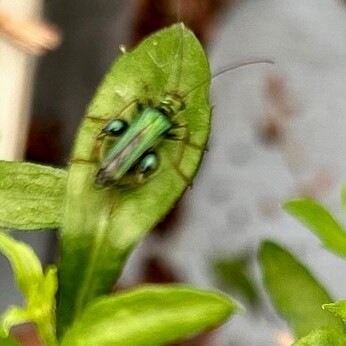
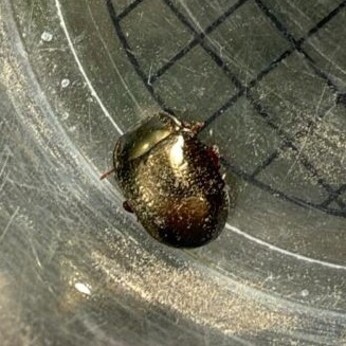
Typically emerging around dusk, Cockchafers have grubs that eat grass roots. But the flying adults are important bat food. Ben’s photo shows very well the unique structure of the antennae of all chafers. And Rob spotted an unusual critter wandering behind the scenes. While it looks like some of the plant-sucking mealybug scale insects that are often found in greenhouses, in fact it is a Mealybug Destroyer, the larvae of a small black and orange ladybird Cryptolaemus montrouzieri, from Australia, often used here as a biological control agent to keep mealybugs at bay.
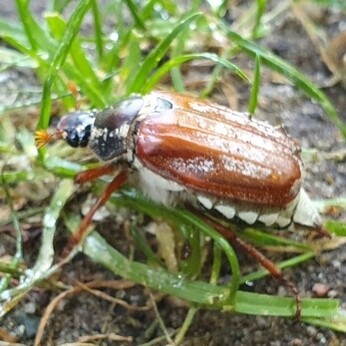
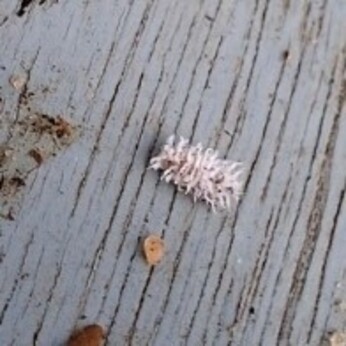
Some of the most impressive beetles are the stag beetles, of which there are two species around this part of the country. Hollie found a lovely adult Lesser Stag Beetle, the commoner of the two. One of Nicola’s groups turned over a log and found the grub of one of the species: they are very similar, and overlap in size. Both live by boring in dead wood; Lesser Stag larvae are usually found above ground, while those of the Stag Beetle are usually buried, so finding it under a log is not really conclusive either way. Given the rarity of the larger species, and its abundance just down the road in Wivenhoe, it would be good to get definitive proof of breeding in the garden.
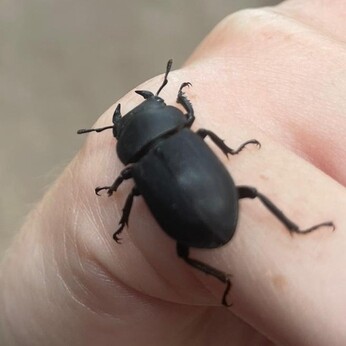
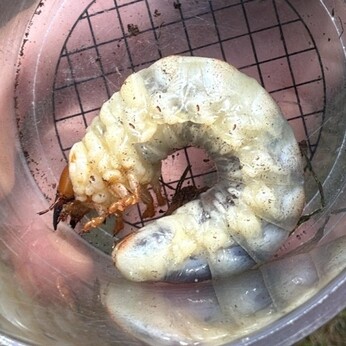
And finally it is over to Beth Chatto's Meanwhile Garden in Colchester, now a year since it was opened, and looking remarkable! David got an excellent shot of a Small Tortoiseshell, and also a Large Yellow-faced Bee Hylaeus signatus. In Essex, the latter isn’t common, but it is found especially along Thameside and around Colchester, in dry grassland and brownfield sites where weld, its favoured forage plant, thrives. Provide the opportunity and Nature will embrace it!
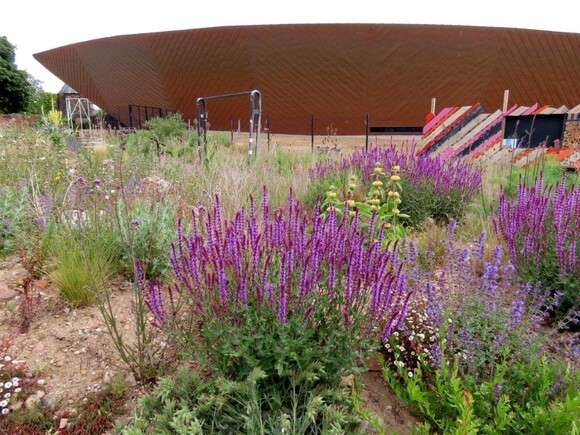
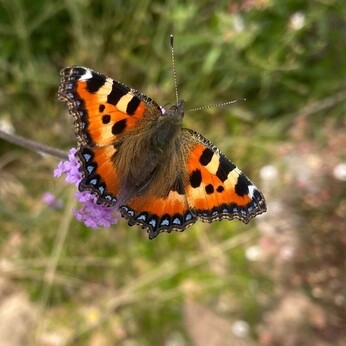
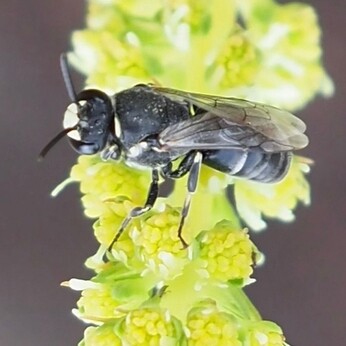
For a different perspective on the last month, see my personal blogs of Wildside Walks and Moth Trapping in the Gardens:
The Wild Side of Beth Chatto Gardens: Midsummer madness! | Chris Gibson Wildlife
Midsummer moths in the Beth Chatto Gardens | Chris Gibson Wildlife
As for the month ahead, depending on the weather this summer could go either way. If drought persists, the promise of early summer may fizzle out, but if rain comes (within reason) we could be in for a bumper few months. Watch this space!


COMMENTS